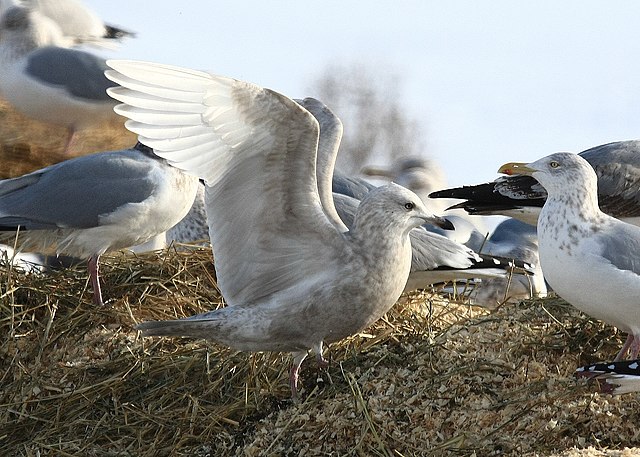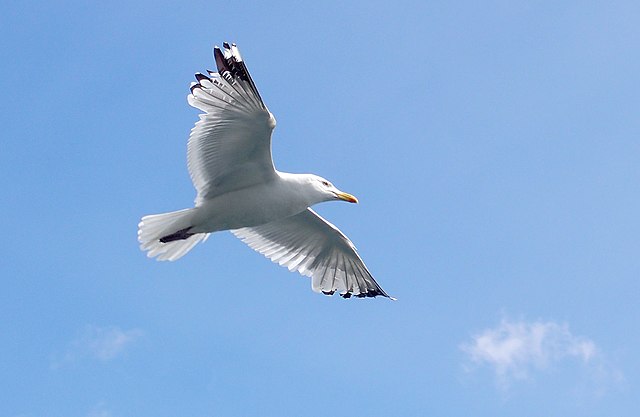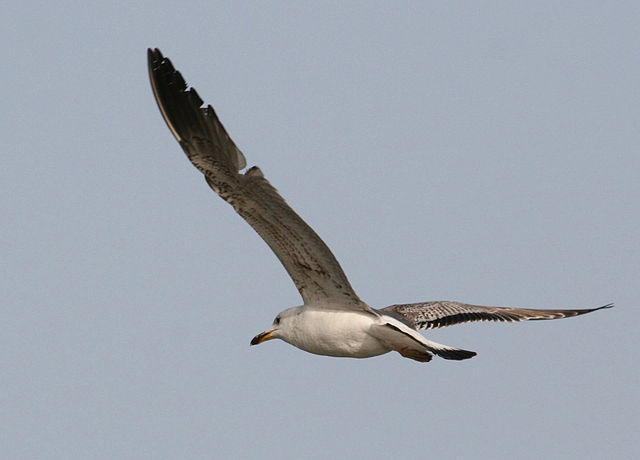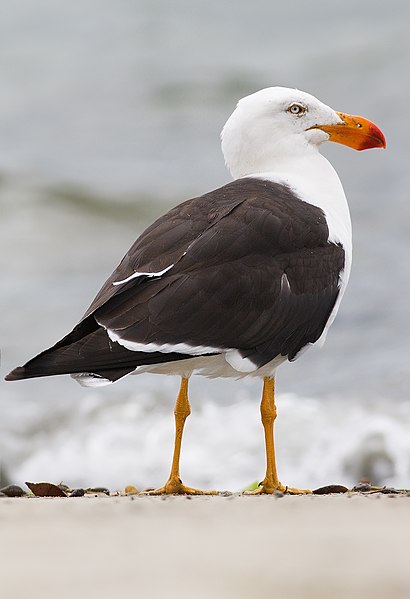The Iceland gull is a medium-sized gull that breeds in the Arctic regions of Canada and Greenland, but not in Iceland, where it is only seen during winter. The genus name is from Latin larus, which appears to have referred to a gull or other large seabird. The specific name glaucoides denotes its resemblance to Larus glaucus, a synonym of Larus hyperboreus, the glaucous gull; -oides is Ancient Greek and means "resembling".
Iceland gull
Iceland gull (Larus glaucoides), juvenile, Cley Marshes
Young Kumlien's gull in New York
Eggs, collection Museum Wiesbaden
Gulls, or colloquially seagulls, are seabirds of the family Laridae in the suborder Lari. They are most closely related to the terns and skimmers and distantly related to auks, and even more distantly to waders. Until the 21st century, most gulls were placed in the genus Larus, but that arrangement is now considered polyphyletic, leading to the resurrection of several genera. An older name for gulls is mews, which is cognate with German Möwe, Danish måge, Swedish mås, Dutch meeuw, Norwegian måke/måse, and French mouette, and can still be found in certain regional dialects.
Gull
Juvenile of Armenian gull in flight, flying over Lake Sevan
The Pacific gull is a large white-headed gull with a particularly heavy bill.
Swallow-tailed gulls are endemic to the Galapagos Islands.








